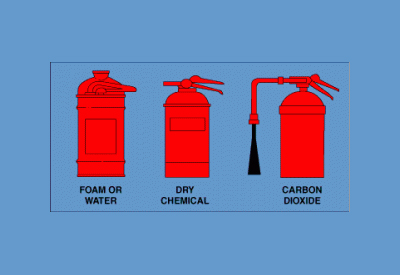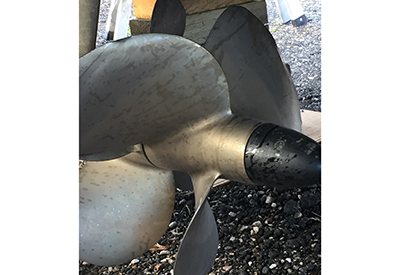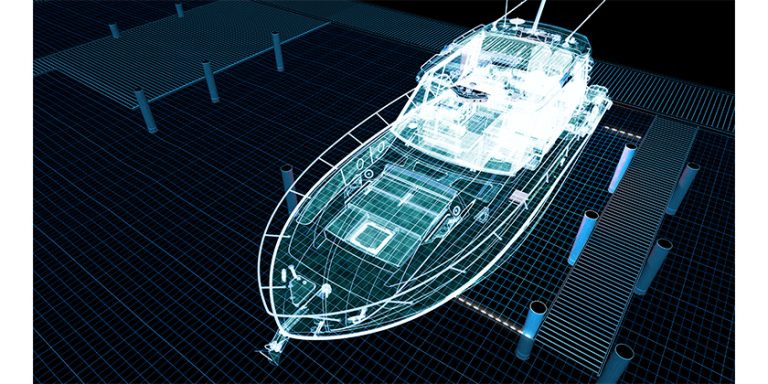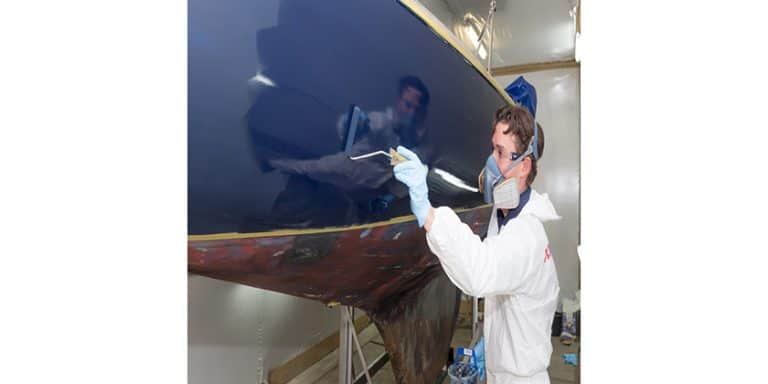Spring commissioning checklist – Part 2

In Part 1 last issue we looked at a lengthy list of pre-launch checks, sailboat rigging and paperwork. This time, we move on to the engine room and carry on from there. We don’t guarantee and exhaustive list – make your own and build on it every year. Everyone has their own spring ritual that often includes rooting through the basement or garage and finding the uncompleted tasks from last year.
With the help of some pros and useful advice from Transport Canada and BoatUS, CYOB has prepared a lengthy, but not necessarily complete, checklist to help you get the most out of the upcoming season. Ask Andrew’s feature article in the current April edition of CY Mag is a great place to learn more!
Engines and Fuel Systems
1. Inspect fuel lines, including fuel tank fill and vent hoses, for softness, brittleness or cracking. Check all joints for leaks, and make sure all lines are well supported with noncombustible clips or straps with smooth edges.
2. Inspect fuel tanks, fuel pumps and filters for leaks. Ensure portable tanks and lines are completely drained of stale fuel before filling with fresh fuel. Clean or replace fuel filters and/or fuel-water separators if not done before winterization.
3. Every few years, remove and inspect exhaust manifolds and risers for corrosion (for inboard-powered and inboard/outboard boats).
4. Charge battery.
5. Clean and tighten electrical connections, especially both ends of battery cables. Use a wire brush to clean battery terminals, and top off cells with distilled water (if applicable).
6. Inspect the bilge ventilation intake and blower ducting for damage or leaks and run the blower to confirm correct operation.
7. Test engine warnings and alarms.
Engine Outdrives and Outboards
1. Inspect rubber outdrive bellows for cracked, dried and/or deteriorated spots (look especially in the folds) and replace if suspect.
2. Check power steering and power trim oil levels.
3. Replace anodes/zincs that are more than half wasted.
4. Inspect the outer jacket of control cables. Cracks or swelling indicate corrosion and mean that the cable must be replaced.
5. Inspect lower unit oil level and top off as necessary.
Trailers
1. Inspect tire treads and sidewalls for cracks or lack of tread and replace as necessary. Check air pressure; don’t forget the spare.
2. Inspect wheel bearings and repack as necessary.
3. Test all lights and replace any broken bulbs or lenses.
4. Inspect winch to make sure it’s working properly. Inspect hitch chains.
5. Inspect trailer frame and axel(s) for rust. Sand and paint to prevent further deterioration.
6. Inspect brakes and brake fluid reservoir.
Safety
1. All flares must be clearly marked as being Transport Canada approved and must not have expired. Flares expire four years from the manufacture date stamped on them.
2. Inspect fire extinguishers. All extinguishers should be visually inspected each month and serviced once a year. All carbon dioxide extinguishers should be weighed annually. Dry chemical extinguishers should occasionally be turned upside down and shaken.
A hydrostatic test should be performed: every 12 years for pressure type extinguishers; every 5 years for carbon dioxide and water extinguishers; after discharge for any extinguisher 5 years old or older
3. Ensure you have properly sized and wearable life jackets in good condition for each passenger, including kids. Check inflatable life jacket cylinders and dissolvable “pill” bobbins in auto-inflating models.
4. Test smoke, carbon monoxide, fume and bilge alarms.
5. Check running lights for operation and spare bulb inventory.
6. Update chartplotter software.
7. Replenish first-aid kit items that may have been used last season or are expired.
8. Check the operation of VHF radio(s) and that the MMSI number is correctly programmed in.
For the Dock
1. In addition to checking its entire length for wear or abrasions, check both ends of the shore power cable connections as well as the shore power receptacle on the boat for burns, which indicate the cable and/or boat’s shore power inlet or the dock’s receptacle must be replaced.
2. Test ground-fault protection on your boat and private dock, and know how to prevent Electric Shock Drowning.
Spring Commissioning. Have a safe and enjoyable season!




























